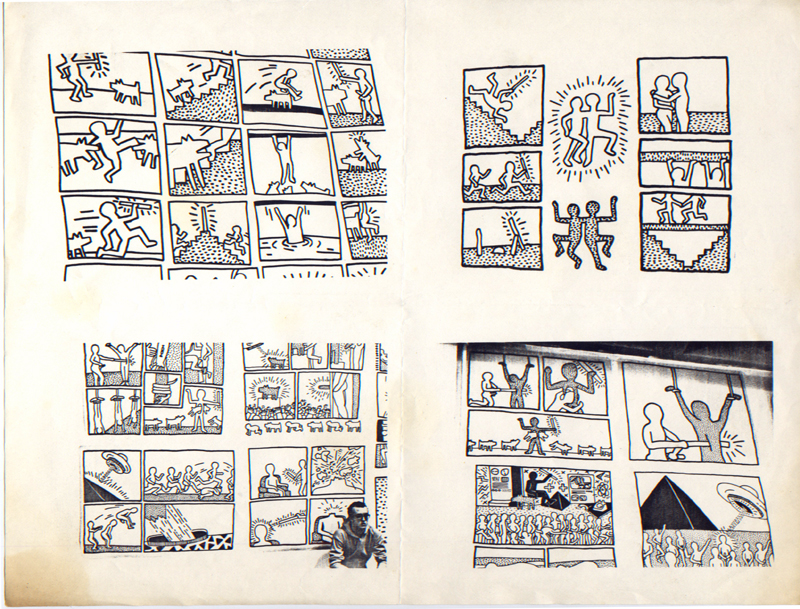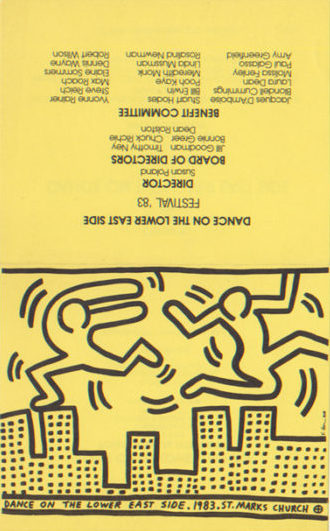Keith Haring Ephemera, 1979–1990
By Marc H. Miller
e•phem•er•a (noun): things that are important or useful for only a short time; items that were not meant to have lasting value; items of collectible memorabilia, typically written or printed ones, that were originally expected to have only short-term usefulness or popularity.
For Keith Haring the line separating fine art and ephemera was thin. His meteoritic career was marked by an unrelenting succession of works cutting across every medium and category of art, but his approach to making art was remarkably consistent whether he was making a large outdoor mural, a commercial illustration or a small invitation to an event. His works favor spontaneity, and utilize an ever-evolving personal repertory of symbols, lines and shapes. This online exhibition spotlights his exhibition posters, invitation cards, promotional giveaways, and designs for record covers. Although these items were all intended for transitory purposes, they retain ongoing interest not only as markers of important events in Haring’s life, but also as aesthetic objects in their own right.
The art world that Haring entered in the late 1970s and early 1980s was unusually conducive to the emergence of ephemera as a treasured art form. Young artists who arrived in New York and found that the established galleries were closed to them had to find alternative ways to establish themselves and make a living through their art. Some turned to the street and subways where art competed with advertising and was vulnerable to destruction; and others participated in nightclub exhibitions intermixing art with music and performance that became a form of popular entertainment. Without access to wealthy collectors, artists welcomed commercial assignments and were ready to make low-priced multiples for popular consumption. All of this was reinforced by the post-pop aesthetic of the time, an environment sympathetic to populism and vernacular formats and images. Haring’s innate ability to communicate with people, his unselfconscious and rapid art making, and his affable social nature allowed him to excel in all the new venues. Open to new ideas and generous, Haring was always ready to design an invitation, provide a cover for a record or a poster for a worthy cause, and create free giveaways or inexpensive multiples for his broad base of fans.
COLLECTION HIGHLIGHTS
- Haring’s very first publication embellished with an original crawling baby drawing on the back cover (1981)
- An invitation to the nightclub Palladium printed on gym shorts for Keith’s Third Annual Party for Life celebrating his birthday (1986)
- A poster for Haring’s exhibition at the Tony Shafrazi Gallery (1983) with Tseng Kwong Chi’s photo of dancer Bill T. Jones body-painted by Haring
- The record album A Diamond Hidden in the Mouth of a Corpse featuring drawings by Haring on the cover, inside the gatefold, and on the inner paper sleeve (1985)

From the Collection
Sold
Sold
$900
Sold
Sold
Sold
Sold
Sold
$750
Sold
Sold
Sold
Sold
Sold
Sold
Sold
Sold
Sold
Sold
Sold
Sold
Sold
Sold

Keith Haring, William Burroughs, Various Artists, A Diamond Hidden in the Mouth of a Corpse LP, 1985
$100
Sold
Sold
Sold
Sold
Sold
Sold
Sold






























































